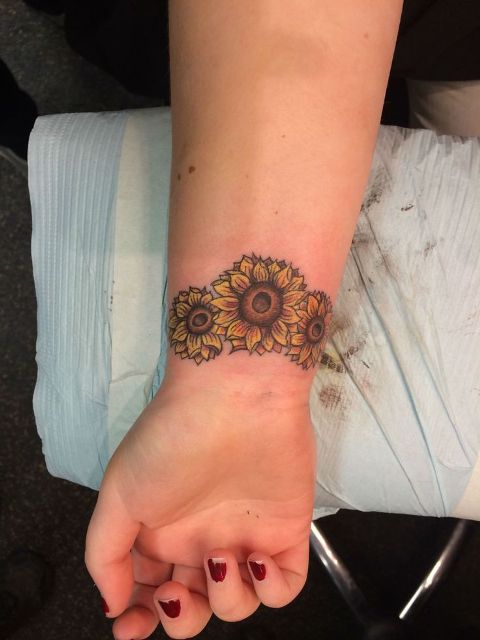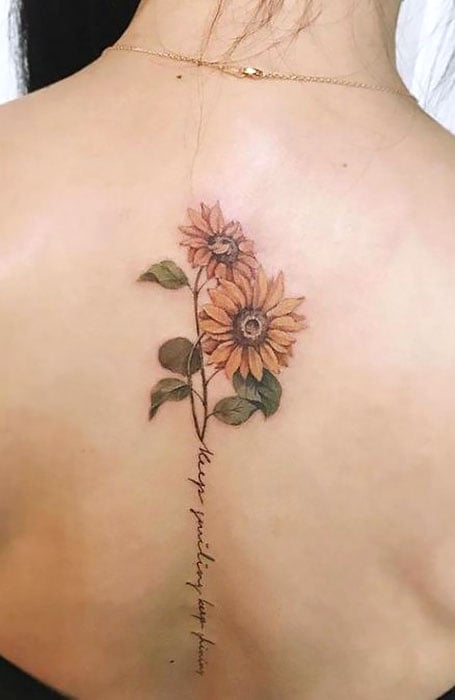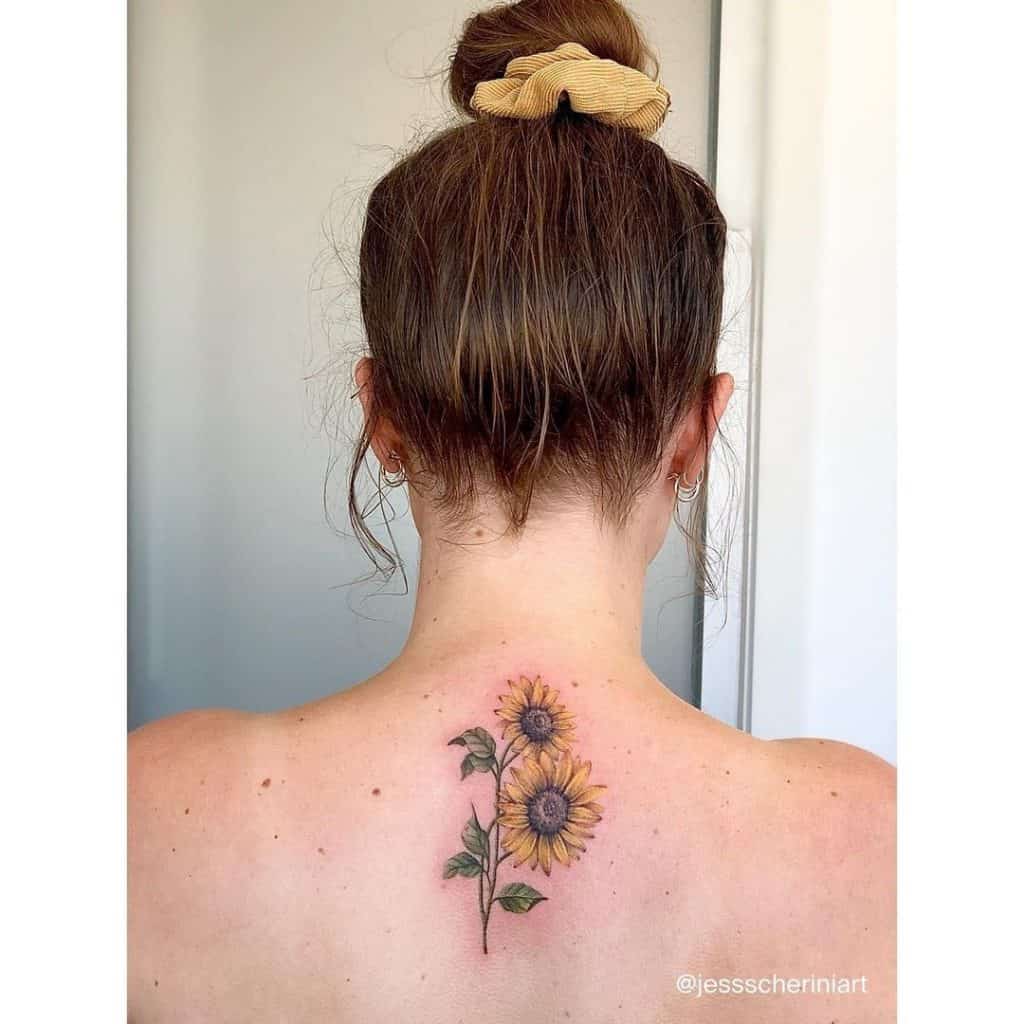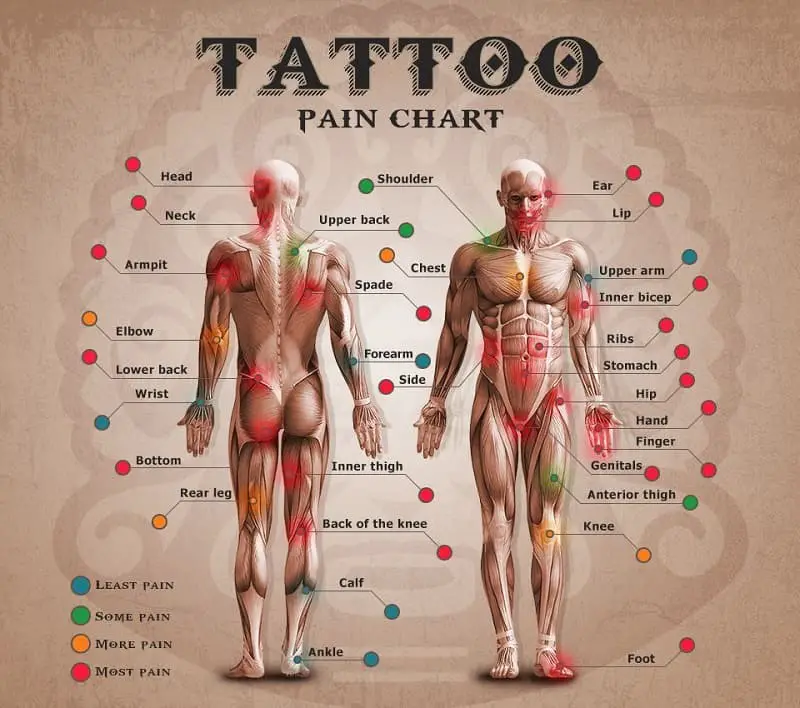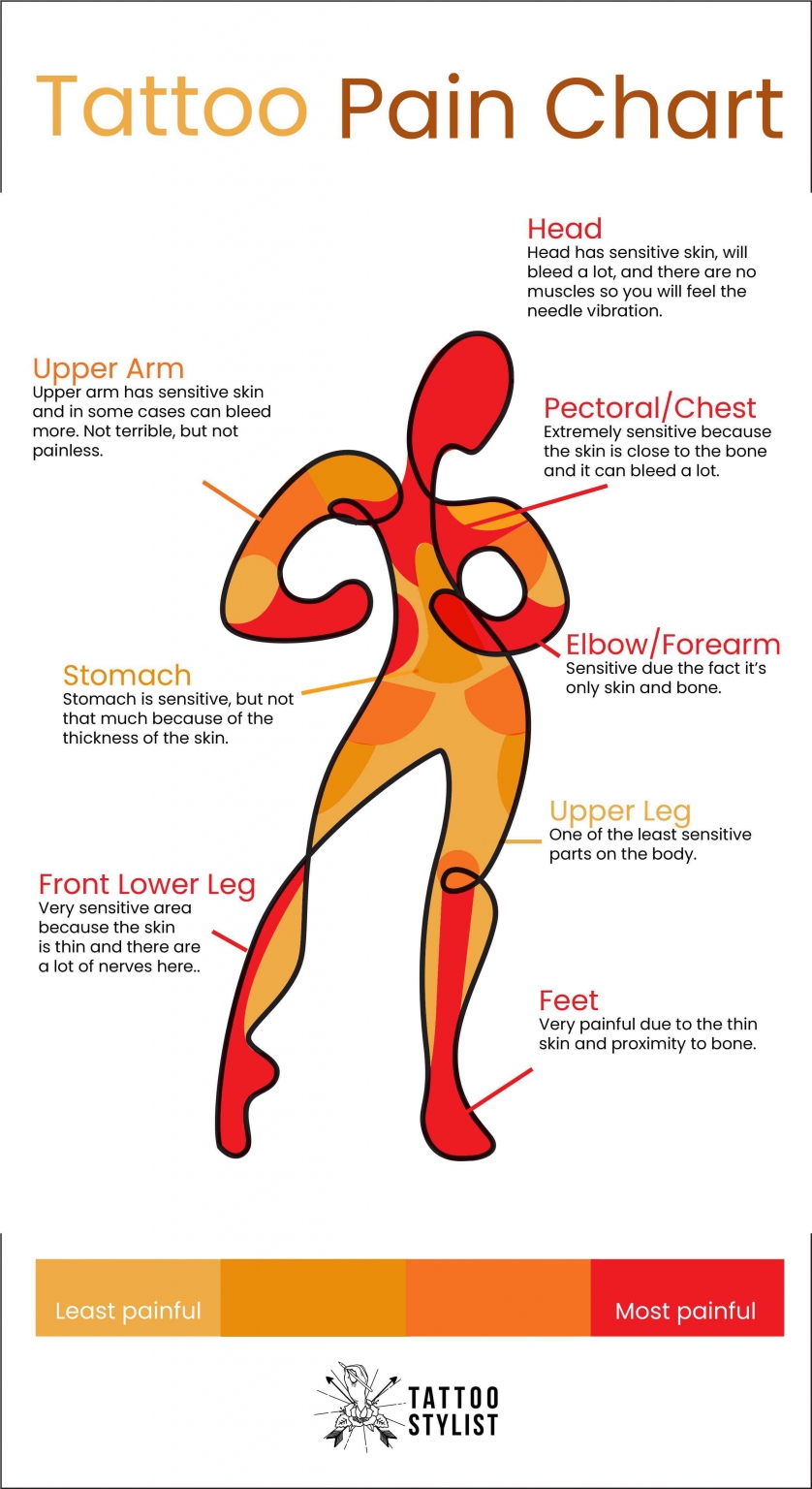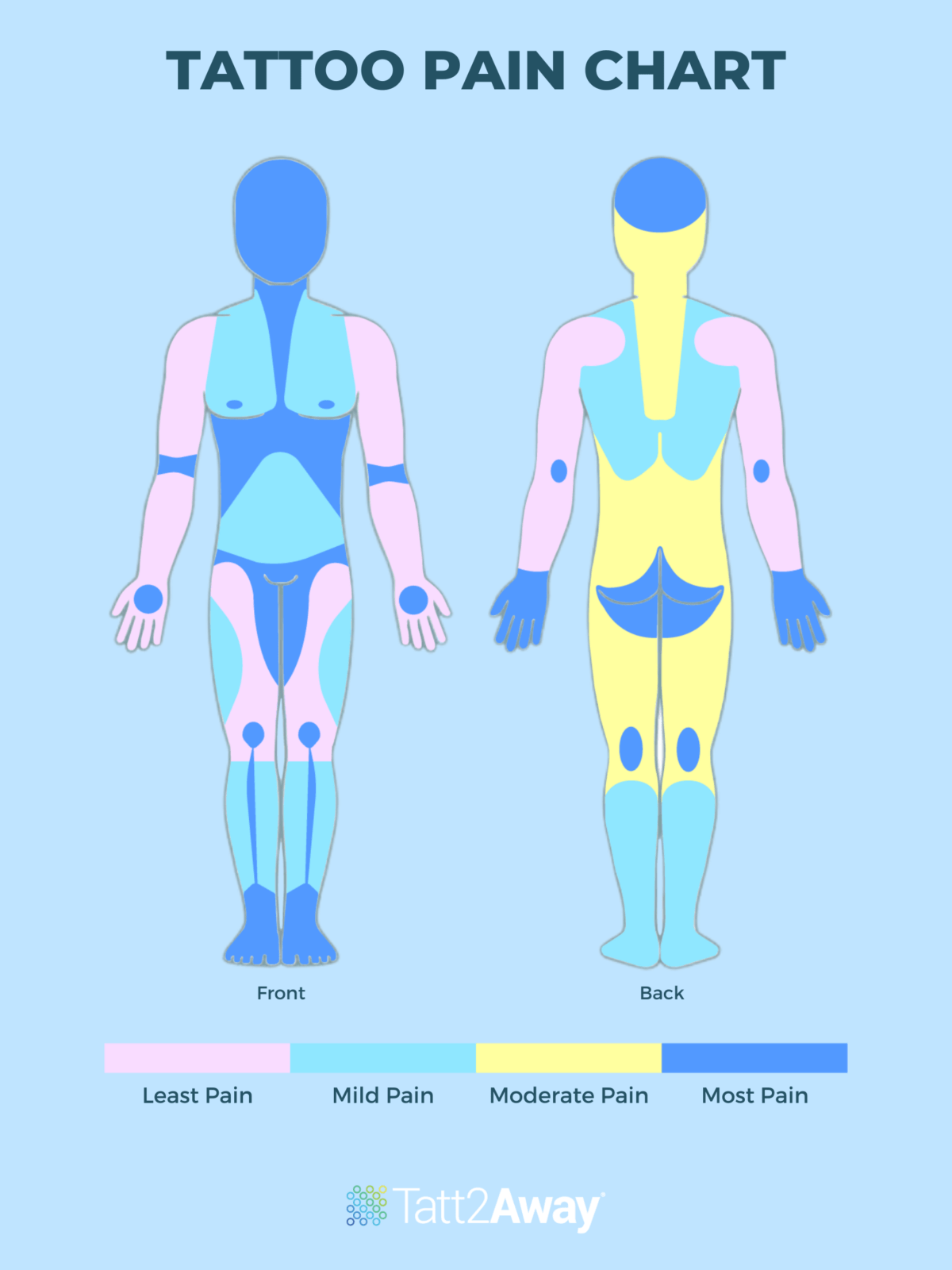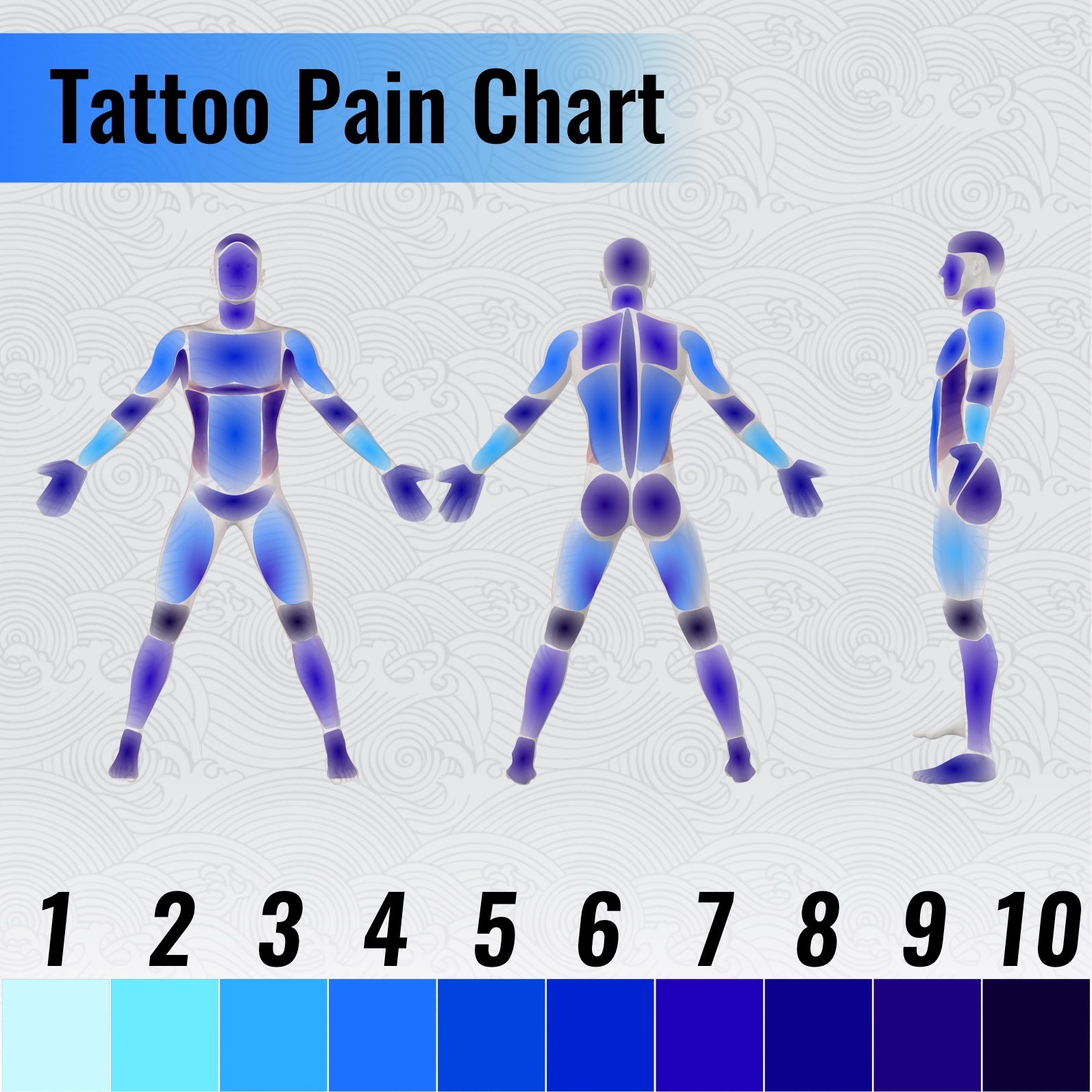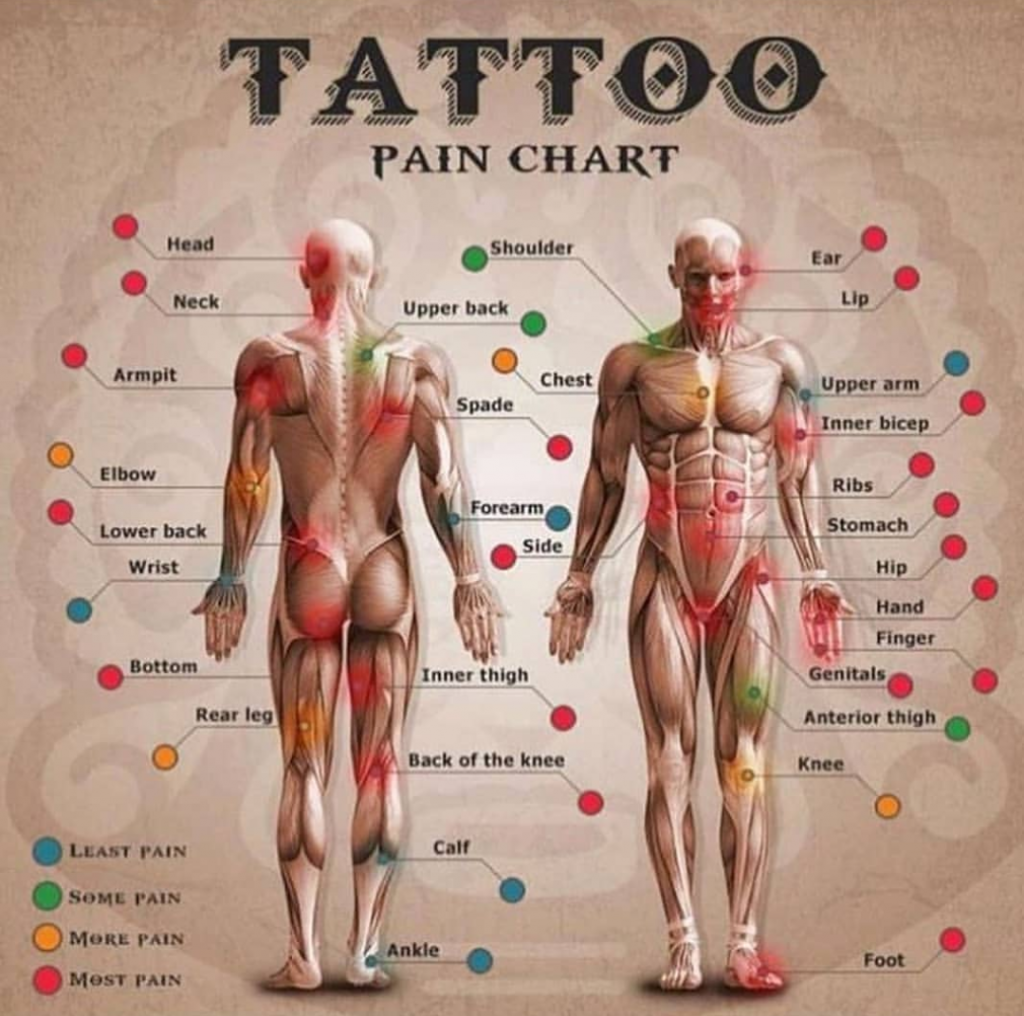
Okay, buckle up, tattoo enthusiasts! We’re diving deep into the world of ink and ouch, exploring the most sensitive spots for those adorable, little tattoos you’ve been dreaming about. Let’s face it, even the smallest tattoo involves needles, and some areas are just… less forgiving than others. So, before you commit to that tiny masterpiece, let’s get real about the potential pain factor.
1. The Delicate Dance: Understanding Tattoo Pain
Tattoo pain is a deeply personal experience. What feels like a tickle to one person might feel like a thousand angry bees to another. Factors like your pain tolerance, overall health, stress levels, and even your hydration can influence how much you feel. But generally, areas with thin skin, close proximity to bone, or lots of nerve endings tend to be the most… ahem… memorable.
2. Rib Cage Revelations: Beauty and the Beastly Pain
Ah, the rib cage. A popular spot for delicate script or intricate floral designs. But be warned, this area is notorious for its intense pain. Why? Because the skin is thin, there’s minimal muscle or fat to cushion the needle, and the ribs themselves are right underneath. Every vibration resonates directly into the bone. Expect a sharp, burning sensation that can be quite intense, especially during longer sessions. Some describe it as a constant, dull ache mixed with sharp, stabbing sensations. Lovely, right?
3. The Foot Fetish Fiasco: Toes and Ankles, Oh My!
Those dainty ankle bracelets and toe tattoos might look cute, but they come with a price. The feet are another area with thin skin and bones close to the surface. Plus, the feet have a high concentration of nerve endings, making them incredibly sensitive. Imagine the needle vibrating directly against your bone with every pass. Ouch! The pain is often described as sharp, throbbing, and almost unbearable for some.
4. Spine-Tingling Terror: Down the Backbone We Go
A striking spine tattoo can be incredibly beautiful, but it’s another contender for the most painful spot. The spine is loaded with nerve endings, and the skin is stretched tightly over bone. The pain can be intense and radiating, feeling like a constant burning sensation that travels down your back. Many people find the vibration of the tattoo machine on their spine particularly unpleasant.
5. Inner Arm Anguish: Biceps vs. Inner Bicep
The biceps, with their generous muscle padding, are usually relatively tolerable. However, the inner bicep is a different story. The skin here is thinner, and there are more nerve endings. The pain is often described as sharp and burning, and some people experience a tingling sensation that travels down their arm.
6. Elbow Enigma: The Funny Bone’s Revenge
While not as excruciating as some other areas, the elbow can still be surprisingly painful. The skin is thin and stretched tightly over bone, and the nerves that run through the elbow are easily irritated. Expect a sharp, jolting pain that can radiate up and down your arm.
7. Knee Cap Knockout: A Bony Battle
Similar to the elbow, the kneecap offers little in the way of cushioning. The skin is thin, and the bone is right beneath the surface. The pain can be sharp and intense, feeling like the needle is scraping directly against the bone.
8. Head Games: The Skull and Scalp Sensation
Head tattoos are becoming increasingly popular, but they’re definitely not for the faint of heart. The scalp is incredibly sensitive, with a dense network of nerves. The pain is often described as a deep, throbbing ache that can be quite overwhelming. Plus, the vibrations of the tattoo machine can be amplified by the skull, making the experience even more intense.
9. Hand-to-Hand Combat: Fingers and Palms of Pain
Finger and palm tattoos are notoriously painful for several reasons. The skin is thin, there are bones close to the surface, and the hands are packed with nerve endings. Plus, these areas are constantly in use, which can make the healing process more challenging. The pain is often described as sharp, burning, and throbbing. And be warned, ink tends to fade quickly in these areas, requiring frequent touch-ups.
10. Sternum Stinger: Right Over The Breastbone
That space between your breasts and above the breastbone? Yeah, that’s another sensitive spot. Thin skin, bone right underneath, and a surprising amount of nerve endings contribute to the pain. It’s a popular spot for delicate designs, but be prepared for a sharp, burning sensation.
11. Ear Ache: Tiny Tattoos, Big Pain
Whether it’s on the cartilage or the lobe, ear tattoos can pack a surprising punch. The cartilage is thin and sensitive, and the lobe, while fleshier, still has a high concentration of nerve endings. Expect a sharp, stinging sensation. The proximity to your head can also amplify the sound and vibration of the tattoo machine, making the experience more intense.
12. Nipple Nightmare: Proceed With Extreme Caution
Let’s just be blunt: nipple tattoos are generally considered to be one of the most painful tattoo locations. The nipples are incredibly sensitive due to the high concentration of nerve endings. The pain is often described as sharp, intense, and almost unbearable.
13. The Inner Thigh Inquisition: Sensitive Skin Zone
The inner thigh is another area with thin skin and lots of nerve endings. The skin is also more delicate and prone to irritation. The pain can be sharp and burning, and some people experience a tingling sensation that travels down their leg.
14. The Great Debate: Pain is Subjective
Ultimately, the most painful spot for a small tattoo is subjective. What one person finds unbearable, another might find manageable. It’s essential to consider your own pain tolerance, research the potential pain levels of different locations, and talk to your tattoo artist. They can provide valuable insights and help you choose a location that you’ll be happy with.
15. Tips for Tackling the Tattoo Pain:
- Get Enough Sleep: Being well-rested can significantly impact your pain tolerance.
- Stay Hydrated: Dehydration can make your skin more sensitive.
- Eat Beforehand: A full stomach can help stabilize your blood sugar and prevent you from feeling faint.
- Avoid Alcohol and Caffeine: These substances can thin your blood and make you more sensitive to pain.
- Breathe Deeply: Focusing on your breath can help you relax and manage the pain.
- Talk to Your Artist: Let your artist know if you’re feeling overwhelmed. They can adjust their technique or take breaks as needed.
- Consider Numbing Cream: While not for everyone, numbing creams can help reduce pain in some areas. Consult with your artist beforehand.
- Focus on Something Else: Bring a book, listen to music, or chat with your artist to distract yourself from the pain.
Conclusion:
Choosing the location for your small tattoo is an exciting process, but it’s important to be realistic about the potential pain involved. While some areas are notoriously more sensitive than others, remember that pain is subjective. By understanding the factors that contribute to tattoo pain and taking steps to prepare yourself, you can minimize discomfort and enjoy the process of getting your new ink. So, go forth, be brave, and choose wisely! Your beautiful, albeit potentially ouchy, tattoo awaits!
FAQs:
1. Is it true that tattoos hurt more when you’re on your period?
Yes, some women report increased sensitivity to pain during their menstrual cycle due to hormonal fluctuations. It’s a good idea to schedule your tattoo appointment when you’re not menstruating if you’re concerned about pain levels.
2. Does the size of the tattoo affect the pain level?
While a smaller tattoo might seem less painful, the location plays a much more significant role. A small tattoo in a sensitive area can be just as painful, if not more so, than a larger tattoo in a less sensitive area. The duration of the tattoo session also matters.
3. Can you build up a tolerance to tattoo pain?
Yes, to some extent. The first tattoo is often the most intimidating because you don’t know what to expect. With each subsequent tattoo, you become more familiar with the sensation, which can help you manage the pain more effectively. However, the location of the tattoo still significantly impacts the pain level.
4. Do different tattoo artists have different pain levels?
Yes, absolutely! An experienced tattoo artist will have honed their technique to minimize pain. They’ll know how to stretch the skin properly, use the right needle depth, and apply pressure evenly. Choosing a skilled and experienced artist can make a big difference in your overall tattoo experience.
5. Is there any way to predict how much a tattoo will hurt?
Unfortunately, there’s no foolproof way to predict how much a tattoo will hurt. Pain tolerance is highly individual, and factors like stress, fatigue, and anxiety can all influence your perception of pain. However, by researching the potential pain levels of different locations and talking to your tattoo artist, you can get a better sense of what to expect.
